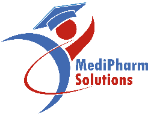Patient support programs play a crucial role in drug safety monitoring by facilitating communication between patients, healthcare providers, and pharmaceutical companies. These programs are designed to provide education, support, and sometimes financial assistance to patients using specific medications. Here’s how they contribute to drug safety monitoring:
1. Education and Adherence Monitoring: Patient support programs educate patients about their medications, including potential side effects and how to recognize adverse reactions. By promoting adherence to prescribed treatment regimens, these programs help ensure that patients use medications as intended, which aids in monitoring drug safety.
2. Early Detection of Adverse Events: Patients enrolled in support programs often have direct access to healthcare professionals associated with the program. This close interaction enables patients to report any adverse events or concerns promptly. Early reporting of adverse events allows for timely evaluation and intervention, potentially preventing serious complications.
3. Data Collection and Reporting: Patient support programs can collect valuable real-world data on medication use and patient outcomes. This data, when aggregated and analyzed appropriately, contributes to post-marketing surveillance efforts. It helps identify patterns of adverse events, patient demographics at higher risk, and other safety-related insights that may not have been apparent in clinical trials.
4. Enhanced Pharmacovigilance: By engaging patients actively in reporting their experiences with medications, support programs complement traditional pharmacovigilance methods that rely on healthcare providers and regulatory reporting systems. This broader data collection approach enhances the overall understanding of a drug's safety profile across diverse patient populations and real-world conditions.
5. Patient Feedback and Quality of Life Measures: Beyond safety monitoring, patient support programs gather feedback on treatment satisfaction, quality of life improvements, and challenges faced by patients. This holistic approach provides pharmaceutical companies with insights into the overall patient experience and helps in refining future drug development and support strategies.
6. Compliance with Regulatory Requirements: Many regulatory authorities require pharmaceutical companies to implement risk management plans that include patient support programs as part of their commitment to drug safety monitoring. These programs demonstrate proactive efforts to monitor and mitigate risks associated with medications throughout their lifecycle.
7. Patient Empowerment and Engagement: By participating in support programs, patients feel empowered to actively manage their health and medication use. This engagement fosters a sense of partnership between patients, healthcare providers, and pharmaceutical companies in ensuring safe and effective use of medications.
In summary, patient support programs play a multifaceted role in drug safety monitoring by promoting patient education, facilitating early detection of adverse events, collecting valuable real-world data, and enhancing overall pharmacovigilance efforts. Their integration into healthcare delivery systems helps optimize patient outcomes while ensuring continuous evaluation and improvement of drug safety profiles.


No Comments